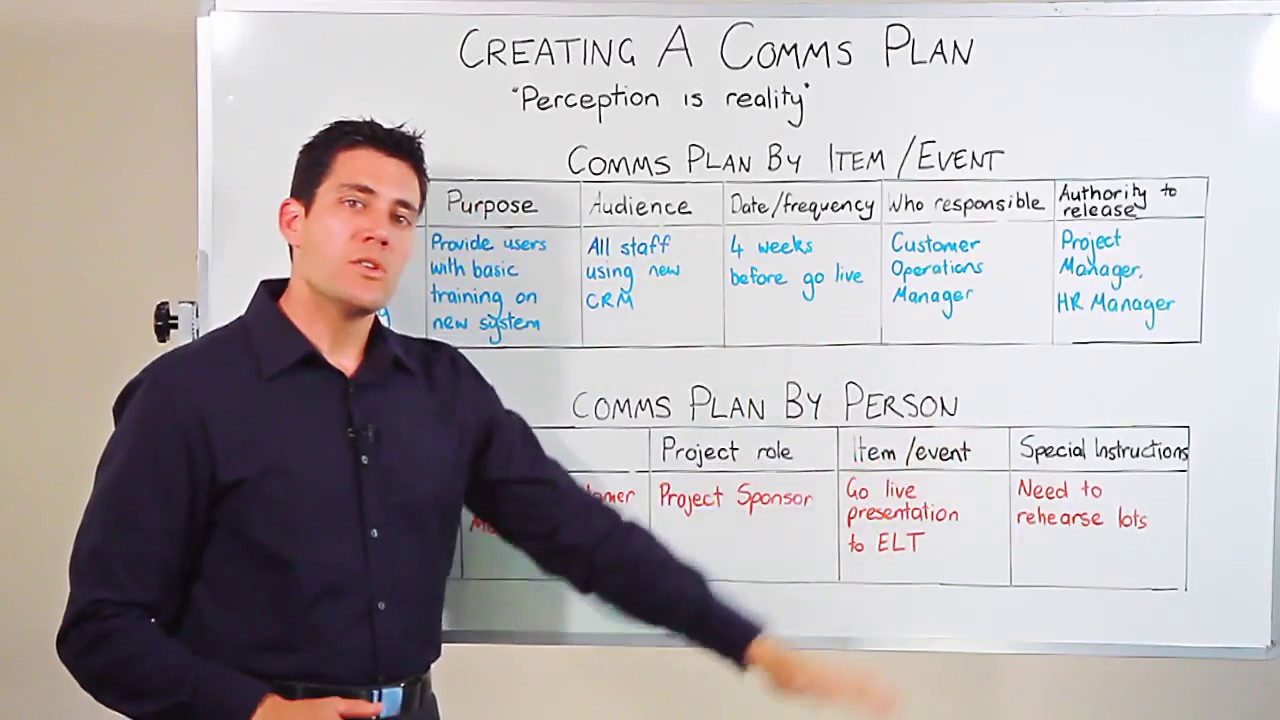A communications plan is intended to assist you and your organization in effectively communicating and meeting fundamental organizational objectives.
In this article, we will look at the major components of a communications strategy, as well as how press/PR plans, online strategies, and marketing plans fit into your organization's overall communications strategy.

What is the difference between PR and marketing?
Difference Between PR Marketing
Two ladies sat at workstations, each working on her laptop
Even specialists in the businessmay quickly blur the distinctions between public relations (PR) and marketing.
While objectives, aims, and even certain techniques may be linked, there is a fundamental distinction between marketing and public relations.
To put it simply, marketing is concerned with increasing sales by promoting products, services, or ideas. Public relations (PR) is primarily concerned with preserving a company's, brand's, or individual's favorable reputation.
PR And Marketing Objectives
A public relations team's objectives are as follows:
- Selling a product, brand, or person through maintaining a favorable reputation among stakeholders and the broader public via numerous communication channels.
A marketing team's objectives are as follows:
- Reaching out to customers and asking them to perform a sales-related action.
- Revenue is rapidly becoming a major criterion against which marketing teams are assessed.
Public Relations And Marketing Strategies
On a daily basis, a public relations professional may be focused on the following tasks:
- Taking charge of company messaging
- Creating press releases
- Obtaining opportunities for public speaking
- Developing a company's, brand's, or individual's media reputation
- Managing media relationson their client's behalf
A public relations firm may also assist customers in developing a communication strategy or crisis managementplan.
A marketing professional, on the other hand, is concerned with:
- Developing and directing advertising campaigns
- Securing conventional and digital advertising placements
- Conducting industry research to assist influence the overall direction of marketing campaigns
- Creating collateral for websites and digital marketing initiatives, including sales pitches and launches, brochures, PDFs, and so on.
- Managing the social mediaprofiles of the firm or brand
Metrics Measured
When a public relations professional wants to assess the effectiveness of their efforts, they look at:
- The amount of favorable press generated online, in trade publications, on television, and in other media outlets.
- Awards were given out during businessgatherings
- The "buzz" is produced by social media profiles, influencers, bloggers, and the general public.
- The public's reaction to the coverage
In a similar way, a marketing professional measures performance based on:
- Did the promoted product or service achieve or surpass sales targets?
- Evaluating the total return on investment of various marketing and advertising techniquesand initiatives.
- Did a product's or service's internet buzz or traffic increase? Did a social media follow increase as a result of advertising material on various platforms?
Target Audiences
In general, there is a distinction between the audiences for whom PR and marketing teams create communications.
- The audience that Public Relations teams attempt to reach is nearly unlimited. These groups might concentrate on targeted or campaign-based outreach to customers, stakeholders, the media, and even staff. Depending on the company's current needs, a PR expert may be producing personalized communications for investors at the same time as a press release blitz.
- The audience that marketing teams attempt to reach is generally larger in the sense that this group is either addressing customers or prospects — assuming that the PR team handles all internal communications. The Marketing team, on the other hand, may participate in activities such as ABM, digital advertising, or email marketingthat center around segmenting and targeting certain groups of either potential or existing customers.
What Is Communication Strategy?
A communication strategy is described as a roadmap that assists a firm in transforming its product or service into a brand by fulfilling communication objectives in order to achieve commercial goals.
Your communication strategy assists a company in defining communication objectives, audience, and communicating brand messaging to consumers or team members.
The advantages of having a communication plansave a firm a lot of time and money. By using communication methods, a company may make better judgments.
The communication strategy provides the firm with a plan for approaching clients in the desired manner. When a firm lacks this communication strategy, it is unable to connect with its consumers and fulfill its goals.
A business should understand that creating a communication plan is not a waste of effort. It aids the firm in communicating the brand message to the public.
It is critical to consider brandingand the internet when establishing a successful communication plan. In this case, brandingwill provide information about the brand's goal and vision. At the same time, the internet will aid in the development of a new approach.

Project Management: Creating a Communications Plan
Steps On How To Write Communication Strategy
Below are the steps on how towrite a communication strategy.
Purpose Statement
It's a good idea to explain why you've created a communications plan and what you intend to achieve with it right away. This does not have to be extremely thorough; it just serves as a reference and reminder for people who will be using it in their work. As an example:
This communication approach demonstrates the power of effective communication to:
- assist us in achieving our overall organizational goals
- successfully interact with stakeholders
- show the effectiveness of our efforts
- ensuring that everyone understands what we do
- Wherever possible, modify one's behavior and perceptions.
Your Present Circumstance
The first section of your communications plan should include a quick overview of what your organization does, what its major roles are, and where it works.
It should also look at your organization's communication strengths - what has worked effectively and what hasn't in the previous five years or so. The tools listed below can be utilized to assist in analyzing your organization's present status.
- PEST Analysis. This entails identifying the Political, Economic, Social, and Technological variables that may have an impact on the functioning of your organization. These might be good or negative elements, and they should include concerns that are likely to affect how your organization works. You must explain why each element will have an impact.
- SWOT Analysis. A SWOT Analysis entails outlining your company's strengths, weaknesses, opportunities, and threats. Consider this implication for your communication priorities. What steps can be taken to transform dangers into opportunities? How can you use good communication to capitalize on your strengths?
- Analysis of Competitors. Examining what your rivals are doing is another important technique for analyzing your present condition. This can be a simple activity in which you identify your top rivals and rank them according to specific criteria. When evaluating present strengths and shortcomings, try to remain objective.
Organizational Goals And Communications Goals
Any communications strategy should be tightly aligned with your entire organizational strategy. In this part, you should consider your organization's broad vision as well as its main purposes and objectives. You should next explain how communications might assist in achieving these objectives.
In addition to referring to particular objectives, this section should provide an overarching sense of the communication concepts that drive the strategy and the major messages that the organization want to express.
It is critical that your communications objectives be perceived as contributing to the attainment of the organization's broader goals. In this way, they will be seen not as an "add-on," but as something as important to fulfilling the organization's entire goal as operational or policy objectives.
The example below demonstrates how this would operate in practice for a (fictitious) homeless organization. Each of the organization's strategic objectives (as outlined in its business plan) may be broken down to illustrate how operations and communications can help to achieve the goals.
Identifying Potential Stakeholders
This part should include a thorough description of your primary audiences - both external and internal. These may include members of the general public, politicians, service consumers, and employees. You might also mention prospective audiences with whom your organization wants to connect.
Many organizations will discover that they have a large number of audiences with whom they must interact. One aspect of the plan may be to determine which audiences are likely to be interested in certain aspects of your organization or activity. Understanding this may help you prioritize your communications efforts.
Another method of prioritizing your audiences or stakeholders is to map them. This entails selecting essential criteria for your organization and then rating your various audiences against those criteria.
This might assist you to determine which are the most significant and, as a result, on which you should focus the majority of your communication efforts. It is generally easier to perform this research with two criteria, allowing you to emphasize differences across audiences.
Looking at their impact on policy and resources, as well as their interest in your organization, are two easy instances of mapping stakeholders.
Messages
After you've defined your target audiences, the following step is to segment your objectives into messages that are relevant to each of them. Begin with the most important audiences first.
Keep in mind that your messaging must be relevant and acceptable for the audience. You might want to use far more direct language with your fans and contributors than you would with local governments or other funders.
It is critical, however, that the messages are consistent. It is critical that every one of your stakeholders understands the type of organization you are, therefore your message should constantly go back to your core organizational objectives and values.
Key Communications Methods
You should now identify the best channels for interacting with each of the audiences you identified in the previous section. These may be an e-bulletin, a conference, a workshop, a brochure, a press release, or an event – as well as larger channels like media and your website.
All of these channels have advantages and disadvantages, which may vary based on your organization's requirements and resources.
Try conducting a quick internal study of the channels at your disposal to determine which are the best to utilize for delivering certain messages to specific audiences.
After you've examined your available channels, you can start building your communications strategy by connecting audiences, messages, and channels.
Work Plan
After you've defined your target audiences and main communication techniques, create a table outlining the essential communications activities, budget, and resources allotted to implementing the plan.
The work plan should also contain projected timeframes and specify specific strategic milestones. This will allow you to track specific steps toward your ultimate goals.
Specific initiatives, events, or publications that you know will take place should be underlined.
Success Evaluation
Your communications strategy should finish with an assessment section. What does success include, and how will you know when your goals have been met?
In this part, you should specify the tools you will use to assess various aspects of your messages. These may be basic metrics like the number of answers to e-bulletins, visits to your website, or increases in donations after a mail-out.
They might be focused on policy changes, for example, have your campaign's major requests been met? You may also add media coverage metrics, not only in terms of number but also breadth and depth.
How frequently were your main themes highlighted, and has there been a movement in public opinion on the topics you've been advocating for?
7 Steps On How To Achieve Success In Communication Strategy
There are several steps that you should be aware of in order to develop a successful communication plan. Let's go through some of those stages right now-
Determine Your Target Audience
The target audience is the next component to consider. The group of people to whom a firm wants to convey its plan is referred to as the target audience. A firm must identify who they are targeting when developing a communication plan.
If the communication strategy is for internal communication, the target audience might include project stakeholders. Consumers, the media, a section of customers, or the target market are all possible targets for marketing communication.
A company's loyal consumers, for example, might constitute a target audience. A firm might define its loyal consumers as members with a loyalty card, social media subscribers, or sales connections.
Key factors to consider when determining your target demographic in order to create a successful message and communication strategy are:
- Making a list of people to whom you wish to market your goods
- Sort your audience to determine who is the most important target for your approach.
- Segmenting the audience
Know Your Company's Goals
Making your communication plan begins with an assessment of your company's present position. Among the most frequent business objectives are:
- Productivity and profitability
- Excellent client service
- Retention of employees
- Core principles must be protected.
- Management of growth and change
- Marketing
Determine Your Communication Goals
The first and most important component of communication strategy is to comprehend and establish the process's goals. Goals are the intended outcomes that a business or organization wishes to accomplish.
So, in this context, communication goals refer to the outcomes that a firm expects from its communication strategy. The objectives should be quantifiable and not time-bound. The goals do not need to define how they must be met. Different business communication goals might be-
- assessing brand awareness
- Increasing brand loyalty
- Stimulating a desire or want
- imparting knowledge, and so on
For example, a firm can establish a target of generating demandfor the product, and it should be 29000 units in the first six months. This is how a firm may establish communication objectives. The objective is also measurable in this case.
Examine Your Company's Current Situation
The following stage is analyzing your company's current condition in terms of its operations, products, focus, functions, and so on. You may use certain particular tools to analyze your business conditions and build a communication plan for your company's future.
You should do a SWOT analysis to determine your company's strengths, weaknesses, opportunities, and threats. You should also do a PEST study, which will assist you in analyzing your company's Political, Economic, Social, and Technological aspects.
This will assist you in determining the strengths and disadvantages of your business so that you may improve the positives and eliminate the negatives to maximize the favorable prospects.
Examine Your Competitors
To develop a result-driven communication strategy, you need first investigate what your rivals are doing. It will not only assist you in developing your own USP, but it will also protect you from making the same mistakes as your rivals.
You will learn how your rivals utilized their communication approach to create a market position. You should also examine their customer experience, price, and branding tactics in order to improve your workers' communication with the target demographic.
Determine The Most Effective Communication Channels
The communication channels are the next phase in this approach. The channels of communication are the means through which the plan will be executed.
You must decide which communication channels would best reach your target audience. You may utilize several channels based on your unique needs, and some of them are as follows:
- Interpersonal
- Community-based
- The media
- Social media and digital media
After you've decided on your channels, you'll need to plan out the many actions that will assist you achieve your communication goals. Then, you must develop an execution strategy based on the who, what, when, and how much of the communication plan.
As a result, companies should develop a communication strategy expenditure plan or budget. In addition, to ensure the long-term growth and effectiveness of your communication strategy, you should create a monitoring and assessment plan.
Determine Consumer Insights And Develop A Communication Strategy
The next step is to undertake a consumer insight study in order to develop your communication strategy. This will assist you in comprehending why your target consumers make a buy. It will assist you in tailoring your strategy to your target audience.
You might attempt a survey or focus group to learn more about your consumers. As a result, you should devise a communication strategy. It will describe how you will achieve your communication objectives.
You will now be aware of the time period in which you must complete your objectives. A communication strategy, for example, might be a product manager engaging with potential and loyal consumers in one month to conduct an ad campaign for product awareness.
What Is PR Marketing Communication?
A public relations (PR) plan may be an important part of a company's promotional strategy. A well-thought-out strategy for capitalizing on public relations opportunities may be just as vital as advertising and sales promotions. One of the most successful ways to interact with and relate to the market is through public relations.
How Are Public Relations And Marketing Connected?
PR and marketing collaborate to convey their respective strategies and execute seamlessly to reach the appropriate audiences. Storytelling. Consistency is essential for success. To minimize brand confusion, PR and marketing should communicate the same message across advertising, media placements, branding, and other channels.
What Separates PR Marketing?
What is the major distinction? Marketing is concerned with marketing and selling a specific product, whereas public relations is concerned with preserving a favorable image for a firm as a whole.



